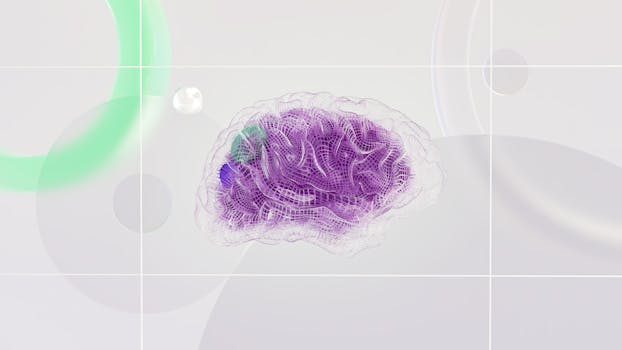What is network neuroscience?

What is network neuroscience?
Network neuroscience is an innovative field that merges neuroscience and network theory to explore how various brain regions interact and communicate. This approach helps us understand the complex structure and function of the brain, paving the way for advancements in cognitive science, productivity, and personal development. By examining the intricate connections among neurons and networks, researchers can uncover insights that enhance our understanding of cognition, emotions, and behaviors.
Understanding Network Neuroscience
Network neuroscience combines the principles of neuroscience with network theory to analyze complex brain networks. This field focuses on how different brain regions work together, rather than just examining isolated areas. It uses advanced techniques to map out these connections, revealing how brain structure influences function and cognition.
The Basics of Neuroscience
To fully grasp network neuroscience, it’s essential to understand some fundamental concepts of neuroscience. Neuroscience is the scientific study of the nervous system, including the brain’s structure, function, and development. It encompasses various aspects, such as neuroanatomy, neurophysiology, and neuropathology. By studying these areas, scientists gain insights into how the nervous system influences behavior, thought processes, and emotions.
Network Theory in Neuroscience
Network theory plays a crucial role in neuroscience by offering a framework for analyzing how brain regions connect and interact. This theory models the brain as a network of nodes (neurons or brain regions) and edges (connections between them). By applying network theory, researchers can identify patterns of connectivity, which helps them understand how information flows through the brain. For a deeper dive into network neuroscience, you might explore this Network neuroscience overview.
Key Components of Network Neuroscience
Several essential elements are studied within network neuroscience, which helps us understand the brain’s operation more comprehensively.
Brain Connectivity
Brain connectivity refers to the various ways that neurons and brain regions connect and communicate. There are three primary types of connectivity:
-
Structural Connectivity: This involves the physical connections between neurons, such as the pathways formed by axons and dendrites. Understanding these connections helps researchers map the brain’s wiring, known as the connectome.
-
Functional Connectivity: This type of connectivity examines how different brain regions work together during specific tasks or in response to stimuli. Functional connectivity often relies on techniques like fMRI to observe brain activity patterns.
-
Effective Connectivity: This concept focuses on the influence one brain region has on another, considering the direction and strength of these connections. Effective connectivity allows researchers to model how information is transmitted throughout the brain.
For more information about the types of brain connectivity, check out this Brain Connectivity Analysis.
Neural Networks and Dynamics
Neural dynamics refers to the patterns of activity that occur within neural networks over time. Understanding these dynamics is crucial for grasping how the brain processes information. Just like a bustling city, where various routes and intersections facilitate the flow of traffic, neural dynamics illustrate how information travels through networks.
Graph Theory Applications
Graph theory is a mathematical framework utilized in network neuroscience to model brain networks. It helps researchers analyze the organizational properties of these networks, such as identifying key hubs (highly connected regions) and understanding how information is distributed across the brain. For a fascinating exploration of graph theory’s applications in brain networks, you can find more details in this Graph Theory Methods.
Applications of Network Neuroscience
The findings from network neuroscience can be applied in various fields, especially in personal development and productivity.
Cognitive Enhancement
Understanding network neuroscience can lead to innovative strategies for improving cognitive functions. By recognizing how different brain regions collaborate, individuals can develop techniques to boost focus, memory, and overall cognitive performance. For instance, mindfulness practices have been shown to enhance connectivity within brain networks, resulting in improved cognitive abilities.
Mental Health Implications
Network neuroscience also plays a significant role in understanding mental health disorders. By studying the connectivity patterns associated with conditions like depression, anxiety, and schizophrenia, researchers can develop targeted interventions. This approach allows for a more personalized treatment strategy, addressing the unique neural patterns of each individual.
Impacts on Learning and Memory
Insights from network neuroscience shed light on the processes of learning and memory retention. By understanding how information is stored and retrieved across neural networks, educators and learners can implement more effective study techniques. For example, spaced repetition and active recall strategies can enhance memory retention by leveraging the brain’s natural connectivity patterns.
Future Directions in Network Neuroscience
As network neuroscience continues to evolve, several exciting trends and technological advancements are emerging.
Emerging Technologies
Technologies like functional magnetic resonance imaging (fMRI) and machine learning are revolutionizing research in network neuroscience. These advanced tools allow researchers to visualize brain activity in real-time, providing deeper insights into neural connectivity. As these technologies develop, our understanding of complex brain networks will only grow.
Interdisciplinary Research Opportunities
The future of network neuroscience lies in interdisciplinary collaboration. By combining insights from psychology, neuroscience, computer science, and other fields, researchers can develop more comprehensive models of brain function. This collaborative approach will likely lead to groundbreaking discoveries that enhance our understanding of the human brain and its capabilities.
Conclusion
Network neuroscience is a vital field that provides profound insights into how our brains function. By studying the intricate connections between brain regions, researchers can uncover the underlying mechanisms of cognition, emotions, and behaviors. As we continue to explore this fascinating area, the implications for personal development and productivity will undoubtedly expand, offering new strategies for enhancing our cognitive abilities and mental well-being.
In a world where understanding our neural networks can lead to significant growth, embracing the insights from network neuroscience could be your key to unlocking your full potential.